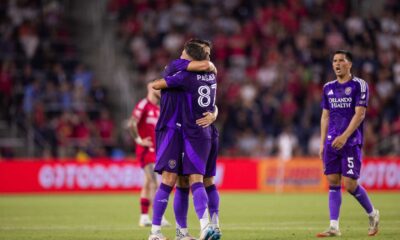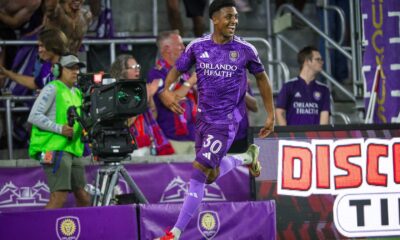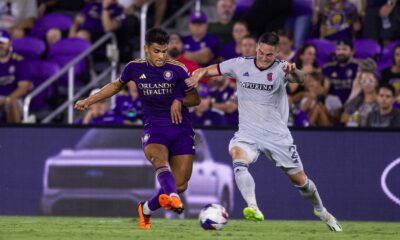Orlando City
Orlando City vs. New York Red Bulls: Final Score 1-1 as a Late Own Goal Salvages a Point for the Lions
It was a mostly forgettable match but the Lions found a late goal to at least earn a point.
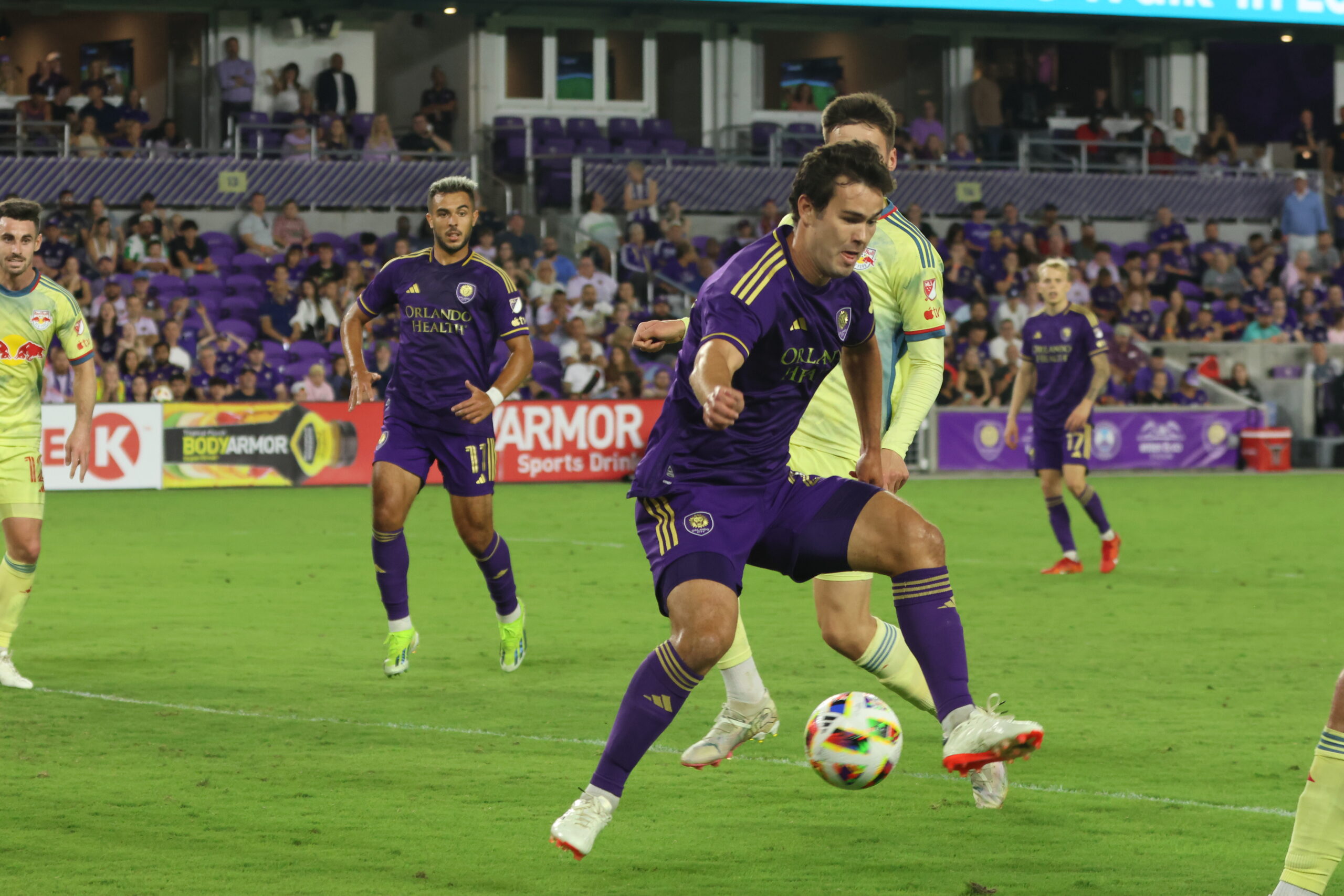
Orlando City continues to struggle in the final third, but an own goal created by a Jack Lynn flick allowed the Lions (1-3-2, 5 points) to come from behind late to grab a point in a 1-1 draw against the New York Red Bulls (3-1-2, 11 points). The Lions conceded first from the penalty spot with Lewis Morgan giving the visitors the lead, but ultimately found a way to get a result in front of an announced crowd of 23,859 at Inter&Co Stadium.
“A great effort with what a poor result,” Orlando City Head Coach Oscar Pareja said after the game. ” And the poor result means, we’ve got to take the point, but with that performance, that effort, that energy, you may think things should end different, but it did not. We conceded a PK from nothing and other than that dangerous play that New York had in the second half, I don’t remember any other action (created by the Red Bulls).”
Pareja’s lineup included Pedro Gallese back in goal after missing last weekend while on international duty. El Pulpo lined up behind a back line of Rafael Santos, Robin Jansson, Rodrigo Schlegel, and Dagur Dan Thorhallsson. The four-man midfield was made up of Ivan Angulo, Nico Lodeiro, Kyle Smith, and Facundo Torres. Luis Muriel and Duncan McGuire led the attack up top.
The Lions started on the front foot but struggled to break through New York’s tight defense in the last decisive movement. Angulo fired a shot that was blocked behind for a corner in the second minute. Orlando took its first several corners short in the first half and none of those plays came close to producing anything.
Thorhallsson tried to fizz a cross through the six to Angulo in the fifth minute but it was too close to Carlos Coronel, who came off his line to grab it.
In the 16th minute, Muriel lined up a shot but took too long in getting it off and Wikelman Carmona got to it first. As a result, Muriel’s swing hit the New York midfielder instead of the ball and the resulting foul on the Orlando forward stopped another promising attack.
New York broke through moments later. Santos was beaten badly by fullback Dylan Nealis, who got into the penalty area and held off Angulo before dropping a pass for Morgan. Smith arrived at the same time as the ball but clipped Morgan and referee Victor Rivas pointed to the spot.
Morgan sent a perfect penalty inside the right post to open the scoring in the 22nd minute.
“They get the penalty, which is too easy that we let that one happen,” Jansson said. “But other than that, I don’t remember anything crazy. They created a little bit, but I do think that we had the most time on the ball and we were really trying to go for it today.”
The Smith foul was a microcosm of the first half for Orlando, which was always second quickest to 50/50 balls and every untidy touch was taken away by the visitors.
Orlando won a series of corners but did nothing with them, although one dangerous cross in was flicked on by McGuire. However, none of his teammates could get onto the end of it and New York cleared.
The Lions were lucky not to go down two goals moments later. A terrible giveaway by Santos sent the Red Bulls in transition. Dennis Gjengaar took the ball down the right and Gallese came off his line to cut down the angle. The New York winger sent his shot well wide of the near post, wasting the opportunity.
The match got a bit chippy after that, with players on both teams pushing and shoving but everyone managed to avoid a booking for it. New York did have Peter Stroud cautioned for a hard foul on Lodeiro and Andres Reyes later picked up a yellow card for a tactical foul to stop McGuire in transition.
Muriel did well to beat Coronel to a ball in the box in the 43rd minute but he had no angle to shoot. He laid the ball back to Torres, who crossed it to the far post for Thorhallsson, however, the Icelandic fullback was beaten in the air and New York cleared.
Angulo sent a bouncing ball high over the net deep in stoppage time and that was it for the first half. Orlando did some things well but the passing and touch was a bit off, playing right into New York’s pressure, and several Lions dribbled into traps the Red Bulls set and were dispossessed in a half mostly played between the penalty areas.
Orlando City finished the half with more possession (55.4%-44.6%), shot attempts (6-2), and corners (5-0), while New York passed more accurately (86.2%-83.8%) and each team put just one shot on frame.
Orlando had a couple of opportunities to start the half, but could not make them pay off. His first was a shot he pulled wide of the left post in the 52nd minute. Coronel had his near post covered anyway. Moments later, McGuire had a shot deflected into Coronel’s hands. Muriel then missed badly on a good attacking movement started with Smith sending a great ball down the left for Torres.
Jansson kept the scoreline from getting worse in the 57th minute. Santos got skinned down the flank again and the ball found its way to Gjengaar in front but Jansson slid in to deflect the shot wide.
New York again could have doubled the lead in the 64th minute when substitute Elias Manoel had a free header in the box but sent it right at Gallese. The play quickly went the other way and McGuire did well to get free of the last defender, but when he entered the box, he sent his shot straight at Coronel.
Orlando nearly got a gift of an own goal in the 73rd minute off a free kick entry that the defense smashed just wide of Coronel’s goal.
The Red Bulls should have put the game away moments later. Schlegel coughed up the ball in his own half and Morgan quickly sent the ball to the middle for a streaking Manoel, but the New York attacker sent his shot just inches wide of the left post.
Smith won Orlando a dangerous free kick two minutes later just outside the area and right in the middle, however, the Lions were called for being offside on the ensuing set piece shot by substitute Martin Ojeda. Coronel had made the save on the shot, but gave up a juicy rebound. The infraction on Orlando stopped the attack.
Pareja sent Lynn and Cesar Araujo on as late subs and it paid dividends. In the 89th minute, Angulo did well to race past the defense to get to a through ball from Araujo, and he cut toward goal, sending a dangerous ball in front. Lynn tried to backheel flick it toward goal but couldn’t make good contact, and it hit defender Noah Eile and went in to tie the score.
“Before I (sent in the centering pass), I took a look up and I saw Jack Lynn at the front post,” Angulo said through a club interpeter. “So, I crossed it and centered it his way. But the good news is that thankfully it went off the defender and resulted in that own goal that we were able to equalize with.”
The Lions looked for a late winner, but couldn’t find one. The only decent look during the five minutes of stoppage time fell for Araujo outside the area. The midfielder had a long run-up to the loose ball and smashed it toward the net, but it was always rising and fizzed over the crossbar.
Moments later, the game was over. Orlando is just 1-1-2 at home in 2024 in MLS play.
The Lions dominated possession (62.2%-37.8%) with New York content most of the second half to stay compact and look for counterattack opportunities. Orlando also finished with more shots (13-7), shots on target (4-2), and corners (8-1). With the Red Bulls playing the anywhere-will-do game in the second half, the Lions also finished as the more accurate passing team (87.6%-78.4%).
“I think we played well. We had the ball, (but it) was not really too dangerous in the opposite attacking area, unfortunately,” Jansson said. “But we’re creating a lot, bringing the ball up there, and then we need to get to the more dangerous chances to put the ball in the net.”
“We had volume, we had sequences, we had energy, we had many things that make you win games, but if you don’t have punch, then it’s not going to happen,” Pareja said. “So, we need to score goals if we want to win games. It’s not happening and I have to come up with something and help them. They are bringing a lot of energy and they have the quality.”
The Lions have next weekend off and will next be in action on April 13, when they visit Audi Field to play D.C. United.
Orlando City
Orlando City vs. St. Louis City: Final Score 4-2 as Enrique, Pasalic Power Lions to Victory
The attack was spectacular on the road, as the Lions scored four times to stay unbeaten against St. Louis City.
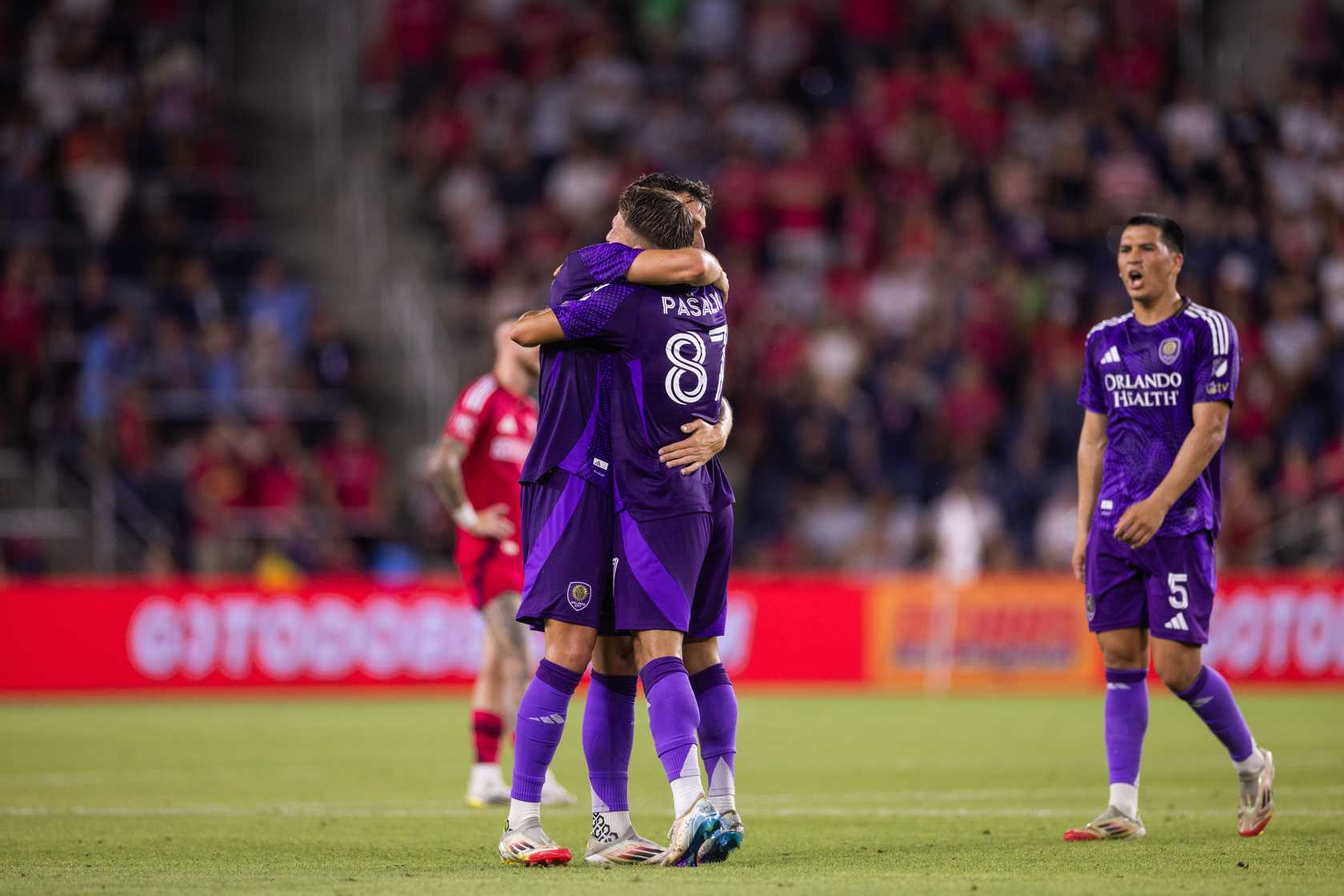
Orlando City’s attack scored four goals and could have at least doubled that with a little better luck and decision making in a 4-2 win over St. Louis City at Energizer Park. Ramiro Enrique and Marco Pasalic each bagged a brace, and the Lions (9-4-6, 33 points) needed each of those goals after a pair of defensive errors allowed the hosts to climb back into a game they were seemingly out of just 22 minutes after kickoff.
Simon Becher and Joao Klauss pulled St. Louis City (3-10-6, 15 points) to within 3-2 just before halftime, but Orlando City weathered the heat and the pressure and put the game away late.
“First, I want to recognize to the players, the effort. Incredible, incredible heat today on the pitch and the humidity,” Orlando City Head Coach Oscar Pareja said after the match. “I think everybody noticed it at the end. But the effort was constant and I want to remark (on) that.”
With Rodrigo Schlegel suspended and Alex Freeman away on international duty, Pareja’s lineup featured Pedro Gallese in goal behind a back line of Kyle Smith, Robin Jansson, David Brekalo, and Dagur Dan Thorhallsson. Cesar Araujo and Eduard Atuesta were the central midfielders between wingers Ivan Angulo and Pasalic, with Martin Ojeda and Enrique up top.
The opening half was a shooting gallery, with the Lions jumping on St. Louis early, then threatening to blow the hosts out, only to start wasting some of the best chances they’ve had all season and returning to the kind of awful defensive lapses that plagued the team early in the year. That turned a comfortable 3-0 lead into a 3-2 nervy finish to the first half.
The Lions created the game’s first scoring chance off a corner kick won by Atuesta. The service found Araujo in the box, and the Uruguayan put his header on target but it was an easy one-hop save for Roman Burki in the fourth minute. Two minutes later, Pasalic sent a good ball from the right to the back post, but there were not teammates making a run there.
No matter, because Orlando City struck first anyway a minute later. The Lions worked the ball through the St. Louis midfield, moving it right to left to Angulo. The Colombian slipped Ojeda down the left, and the Argentine sent a crisp ball across the top of the six. Enrique ran onto it and redirected it past Burki to make it 1-0 in the seventh minute.
“That was a transition goal, something we worked on a lot this week in training,” Enrique said. “It was a great transition by the team. We brought it forward well, and once Tincho (Ojeda) arrived in the spot that he did, I know that he’s always going to move it towards the center, and then open up spaces. So, as soon as he did that, I was able to get in the right spot and push it towards goal and pushed us ahead.”
The lead grew just moments later. Orlando broke in transition and Pasalic made a nice move to slow down and buy himself some space in the middle. The Croatian fired from distance and picked out the inside of the right post to make it 2-0 in the ninth minute.
Pasalic had an open header on a Smith cross in the 11th minute but this time the Croatian hit his shot right at Burki for an easy save.
After that miss, St. Louis had a good attacking spell as the Lions struggled with some poor touches and passes against the press. Klauss created the first chance out of nowhere, but Gallese made a partial save and the ball hit off of Smith and deflected away. In the 13th minute, a poor giveaway allowed Marcel Hartel a shot, but the effort went over the crossbar.
Jansson had a good chance to clear in a cross, as he was positioned well and no one was in front of him, but he scuffed the clearance out for a corner. Timo Baumgartl bundled the service forward but right to Gallese. Klauss then got another opportunity, but the defense blocked his shot out for a corner.
The Lions finally took the pressure off with a counterattack and created another scoring chance in the 18th minute. Enrique was set up at the top of the box, but he sent his curling effort just outside the right post near the top corner. That led to another good spell for Orlando City, and moments later, Pasalic found Ojeda in a good position on the left but the ball skipped over the Argentine’s foot and out for a goal kick.
The Lions’ lead bulged to 3-0 just after the restart. Orlando forced a giveaway and Atuesta knocked the ball quickly to Enrique, who slammed the ball past Burki to make it 3-0 in the 22nd minute. It was Enrique’s fourth of the season.
“We saw in St. Louis a group that they aggressively want to play it out of the back, and especially their goalkeeper,” Pareja said. “We were sure that with the pressure that we were doing, we may have a chance on that phase of the game.”
“It’s another thing that we trained on this week, and it was something that we told ourselves that we could score from, because they had a lot of confidence in the way that they were building out,” Enrique said. “We worked with the high press and the back press as well. And, you know, we were able to take advantage of that tonight and get it high up the field, and then thankfully, I was able to score on the chance that we were able to turn over in that situation.”
The game slowed down for a bit leading up to the hydration break in the 33rd minute. The Lions then got exceedingly wasteful with their chances and a couple of defensive lapses allowed the hosts to climb right back into a game they were completely out of at the time.
Enrique had his first opportunity to complete his hat trick in the 36th minute on a great ball over the top. He was able to bring it down with Burki charging out, and as he tried to cut inside and fire it into the empty net, Burki got the slightest of touches on the ball to knock it away. By the time he regathered, the chance was gone.
Two minutes later, Enrique got his second chance to complete the hat trick on a nice diagonal ball to send him in behind. This time, the Argentine took an extra touch instead of shooting first-time, and Burki came out to smother it. Ojeda then fired a right-footed shot in the 39th minute from the left. The shot was right at Burki, who made the save. The rebound found its way to Thorhallsson on the right, but the Icelandic fullback made a mess of the shot, sending it high into the stands.
Those wasted opportunities allowed the hosts to pull one back in the 40th minute and get into the game. Becher got in behind Smith on a ball over the top. Jansson overran it as he cut back inside and slotted past Gallese to make it 3-1.
“I thought we had two very clear chances to put the game even further away from St Louis,” Pareja said. “We missed it, and in that moment, they reacted well. They scored that first goal and it seems like we lost a little bit of control of the ball.”
The goal galvanized St. Louis City. Klauss had a chance from the top of the box moments later but his shot deflected out for a corner. The Brazilian then headed over on the ensuing corner kick.
The Lions’ biggest mistake in the attack came in the 44th minute. Orlando broke 2-v-0 behind the defense with Angulo taking the ball up the left. Enrique was on Angulo’s right, hanging back to stay onside. Inexplicably, Angulo dribbled the ball straight to Burki before trying to lay it off and the goalkeeper got his foot on it to break up what should have been the easiest goal of the night and Enrique’s first career hat trick. Instead, the chance evaporated.
St. Louis City pulled a second goal back in the third minute of first-half stoppage time. Atuesta had a chance to clear it but he muffed his attempt and his distraction kept Brekalo from being able to clear. The ball ended up with Klauss, who slammed it into the net to make it 3-2.
“They scored that second goal with that mistake that we made,” Pareja said.
Ojeda had one more decent opportunity late, but Burki saved it and the Lions went to the half nursing just a one-goal lead.
At the break, Orlando City had the advantage in possession (53%-47%), shots (12-11), shots on target (8-3), and passing accuracy (90.4%-87.1%). Both teams earned three corners.
“We scored three goals and we could have scored probably a couple more,” Pareja said. “But we ended up just conceding them two goals and made them believe in the game, so that became a challenge for the second half. We started the half more timid and they got some confidence, but at the same time, in that second half, we played very smart and we did what we needed. We moved the numerical superiority that they wanted to do, and in the moments that we arrived to the box, we were very dangerous.”
St. Louis City came out of the break as the much more confident team, keeping Orlando pinned deep for much of the first 10 minutes. Eventually, the Lions settled into the half and started generating chances, but not as clear-cut as in the first half.
Ojeda fired over the bar with his right foot off a deflected Atuesta cross that found him near the top of the area in the 48th minute.
St. Louis held possession for a spell but couldn’t create chances out of it. Orlando eventually went the other way and fashioned some promising attacks, but the Lions couldn’t pay them off. The first of those came in the 56th minute, when Pasalic laid the ball off for Atuesta outside the area, but the Colombian fired right at Burki. Seconds later, Angulo did well to cut in from left to right, but his shot was deflected out for a corner by Kyle Hiebert. The Lions couldn’t pay off the set piece.
Enrique again came close to his hat trick in the 59th minute, getting forward and trying an inside-out shot from near the top of the area. Burki made another diving save to keep it a one-goal game. On the ensuing corner, Atuesta did well to pick out Araujo near the left corner of the box. The Uruguayan again got his header on target but Burki fought it off at the near post in the 62nd minute. A minute later, Pasalic had his shot blocked out front by Hartel. Atuesta’s shot was blocked out front two minutes later. Pasalic then drew a foul just outside the area in the 67th minute, but Ojeda fired his free kick over the goal frame.
Klauss had a good opportunity to equalize off an attacking-third turnover by Atuesta in the 76th minute. A quick ball over the top found the Brazilian, who discarded Brekalo and then fired just wide.
Enrique’s final chance to complete his hat trick came in the 80th minute, when he made a great move to put himself in behind the defense at midfield. The Argentine had a long run with the ball from left to right to get himself clear to shoot and sent a shot toward the left post that beat Burki but slipped just inches wide of finding the net.
Two minutes later, it was Pasalic who put the game away. Jansson sent a ball forward to Atuesta near midfield. The Colombian chested it down and dished to Pasalic on the right. The Croatian cut inside, got his defender to open up, and fired a clinical incision of a shot through Jayden Reid’s legs, freezing Burki in place and making it 4-2 in the 82nd minute with his eighth goal of the season.
“The surprise is that the way (Pasalic) adjusted to the league, to the group, has been so fast, and I may say that he even improved our position in there,” Pareja said of the Croatian filling the hole left behind by the sale of Facundo Torres to Palmeiras. “So, with all what Facu has given us, too, and the love that we have for him, I think Marco is taking that position to the next level. His scoring talent, the way he grew with the group, socially he’s an incredible kid, too. So we’re so blessed to have him.”
The hosts kept coming in an effort to get something from the game. Klauss fired a header wide in the 89th minute as the Orlando defense did just enough to pressure him into the misfire. Gallese then made two big saves in stoppage time to preserve the lead. The first came off a flicked header on a long-range set piece in the third extra minute. Michael Wentzel got his head to the entry ball and flicked it into Gallese’s belly, but the Peruvian was able to catch it cleanly with St. Louis attackers closing on him. Shortly thereafter, substitute Brendan McSorley was left in too much space and sent a 25-yard shot just wide of the left post.
The last chance ended with Gallese’s biggest save of the match. McSorley did well to turn Smith and then beat him to the outside, smashing a shot on target. Gallese reacted quickly to knock the ball over the net with a good save.
That was the last good look and the Lions hung onto the two-goal lead to win their second straight on the road.
Orlando City finished with the advantage in possession (50.2%-49.8%), shots (24-16), shots on target (12-5), corners (6-5), and passing accuracy (88.3%-85%).
“Very happy tonight for the team, especially to get this win out here on the road and in the heat,” Enrique said. “You know, it’s a good three points for the team tonight, so I’m really happy and ready to go.”
Due to other results around the league, Orlando City remains fifth in the Eastern Conference, just a point behind the Columbus Crew.
Hopefully the Lions got a good, long rest after the Colorado match, because they have a short turnaround with FC Cincinnati visiting Inter&Co Stadium on Saturday.
Orlando City
Orlando City Fullback Alex Freeman Selected to Participate in 2025 MLS All-Star Game
The 20-year-old, currently with the USMNT, was selected via fan vote to his first MLS All-Star Game.
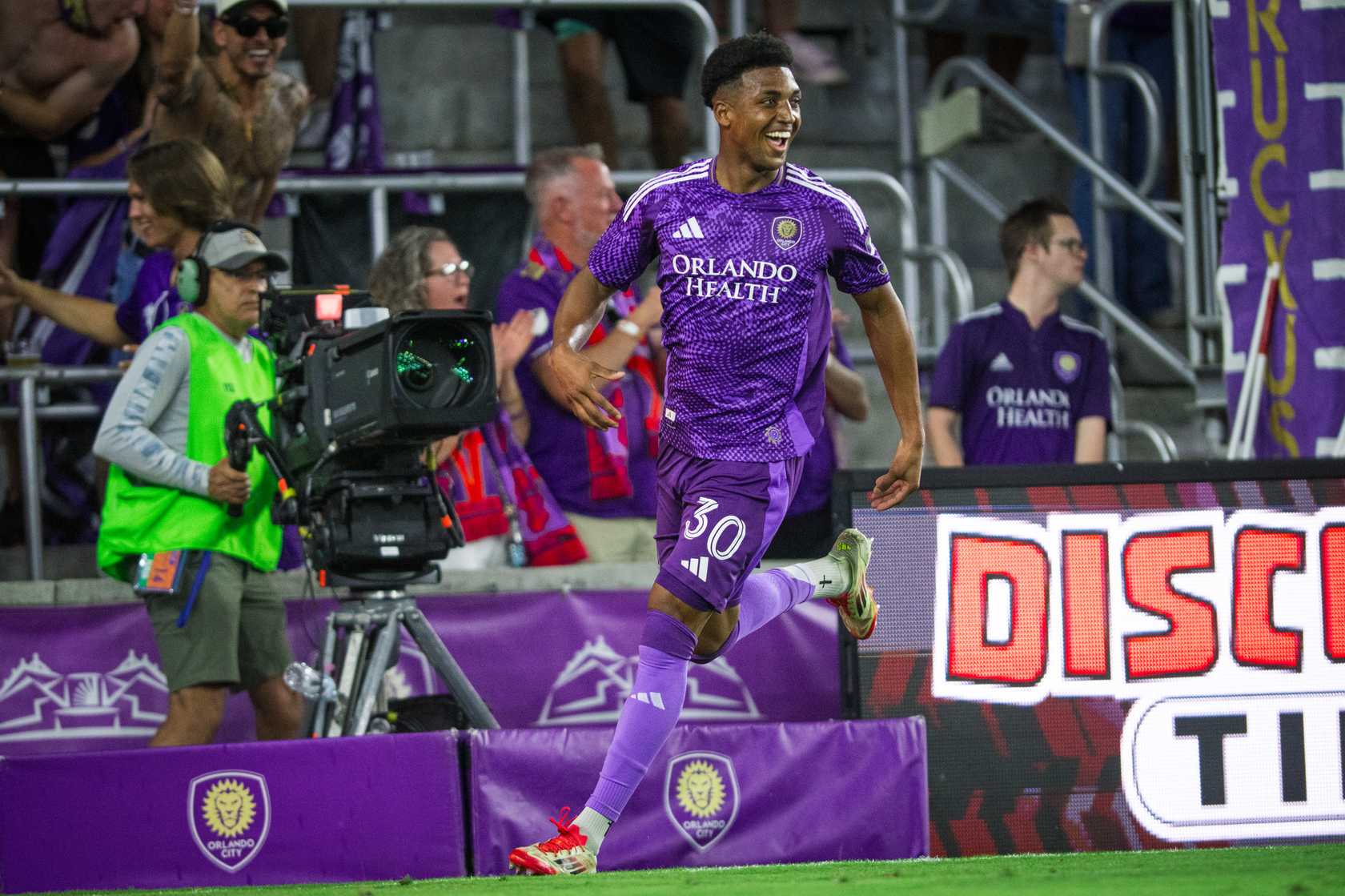
Fullback Alex Freeman has been selected to the 2025 MLS All-Star Team to compete in Austin, TX on July 23, the club announced today. Freeman, 20, who is currently away on international duty with the United States Men’s National Team in the Concacaf Gold Cup, was selected via fan vote and is the youngest player on this year’s All-Star squad. The 2025 MLS All-Star Game will pit the MLS All-Star Team against the Liga MX All-Star Team at Q2 Stadium.
Freeman was selected through the league’s fan, media and player voting process, receiving
the highest vote total among MLS right backs. The young fullback has had a breakout season in 2025, appearing in 17 matches (16 starts) with Orlando City, playing 1,474 minutes and scoring four goals with one assist. His four goals are the most by a defender in MLS play this season.
Prior to this season, Freeman had made just three MLS appearances — all off the bench — for a total of nine minutes, putting just one shot on target. He picked up his first goal contribution last year with an assist against D.C. United on July 6, 2024.
Freeman’s play has been head-turning, and he’s earned his first USMNT call-up and appearance at the senior level this season. A member of the U.S. Gold Cup team, Freeman started all three group stage games, becoming just the second USMNT player aged 20 or younger to do so. He helped the United States win all three matches, keeping clean sheets against Trinidad & Tobago and Saudi Arabia.
Freeman is the first Orlando City player selected to the MLS All-Star Team since Pedro Gallese and Nani represented the Lions in Los Angeles in 2021. He is also the first OCSC defender to be selected to the MLS All-Star Team. Freeman becomes the seventh different player and eighth different representative of the club overall in the midseason exhibition (James O’Connor was head coach of the 2019 event held in Orlando).
Orlando City SC All-Stars
| Year | Player | Position |
| 2025 | Alex Freeman | Defender |
| 2021 | Pedro Gallese | Goalkeeper |
| 2021 | Nani | Forward |
| 2019 | Nani | Forward |
| 2019 | James O’Connor | Manager |
| 2018 | Yoshimar Yotun | Midfielder |
| 2017 | Dom Dwyer | Forward |
| 2017 | Kaká | Midfielder |
| 2016 | Cyle Larin | Forward |
| 2016 | Kaká | Midfielder |
| 2015 | Kaká | Midfielder |
2025 MLS All-Star Team
Goalkeepers (3)
- Dayne St. Clair (Minnesota United FC / Voted In)
- Brad Stuver (Austin FC / Coach’s Selection)
- Yohei Takaoka (Vancouver Whitecaps FC / Coach’s Selection)
Defenders (8)
- Jordi Alba (Inter Miami CF / Voted In)
- Max Arfsten (Columbus Crew / Coach’s Selection)
- Tristan Blackmon (Vancouver Whitecaps FC / Voted In)
- Michael Boxall (Minnesota United FC / Voted In)
- Alex Freeman (Orlando City SC / Voted In)
- Jakob Glesnes (Philadelphia Union / Coach’s Selection)
- Andy Najar (Nashville SC / Coach’s Selection)
- Miles Robinson (FC Cincinnati / Coach’s Selection)
Midfielders (6)
- Sebastian Berhalter (Vancouver Whitecaps FC / Voted In)
- David Da Costa (Portland Timbers / Coach’s Selection)
- Evander (FC Cincinnati / Voted In)
- Diego Luna (Real Salt Lake / Voted In)
- Jeppe Tverskov (San Diego FC / Coach’s Selection)
- Philip Zinckernagel (Chicago Fire FC / Coach’s Selection)
Forwards / Wingers (9)
- Patrick Agyemang (Charlotte FC / Commissioner’s Pick)
- Tai Baribo (Philadelphia Union / Voted In)
- Denis Bouanga (LAFC / Voted In)
- Anders Dreyer (San Diego FC / Coach’s Selection)
- Hirving ‘Chucky’ Lozano (San Diego FC / Commissioner’s Pick)
- Lionel Messi (Inter Miami CF / Voted In)
- Diego Rossi (Columbus Crew / Coach’s Selection)
- Brandon Vazquez (Austin FC / Coach’s Selection)
- Brian White (Vancouver Whitecaps FC / Voted In)
Orlando City
Orlando City vs. St. Louis City: Preview, How to Watch, TV Info, Live Stream, Lineups, Match Thread, and More
The Lions make their first trip to St. Louis looking to build on their win at Colorado.
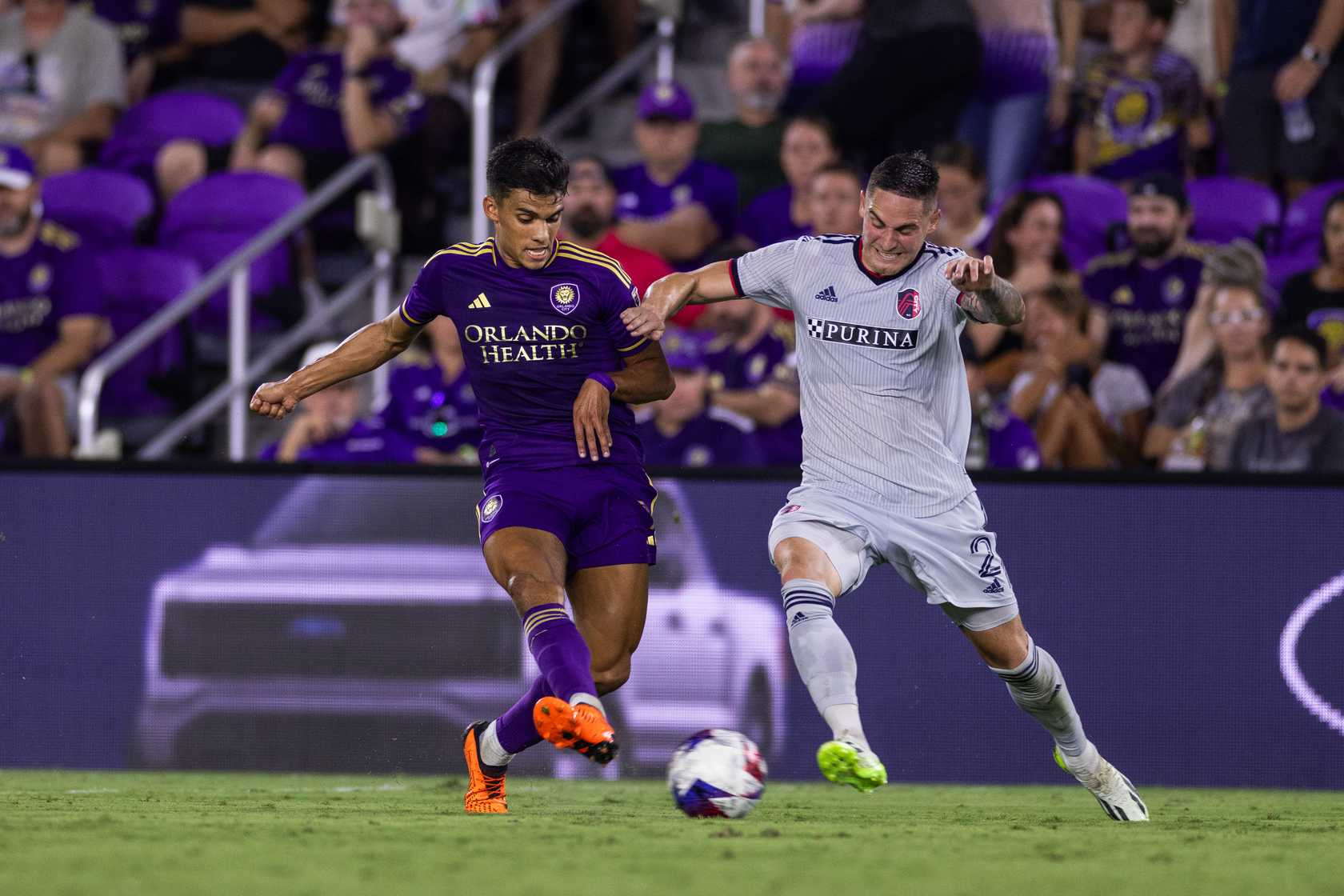
Welcome to your match thread and preview for a Wednesday night matchup between Orlando City (8-4-6, 30 points) and St. Louis City SC (3-9-6, 15 points) at Energizer Park in St. Louis, MO (8:30 p.m., MLS Season Pass on Apple TV). This is the second meeting ever between the two sides, the first in St. Louis, and the only one on the 2025 regular-season schedule.
Here’s what you need to know about the match.
History
These teams have met just once before. Orlando City won that match 2-1 on Aug. 26 at Exploria Stadium on Facundo Torres’ penalty in the first minute of stoppage time. Torres completed his brace after a handball in the box by Anthony Markanich stopped a shot by Rafael Santos. Torres opened the scoring in the second half, but Rasmus Alm equalized, with his goal being awarded after video review revealed the referee’s assistant should not have raised their flag for the ball going out of play prior to the critical pass that led to the goal. Jake Nerwinsky was sent off late in that game for a foul denying Ramiro Enrique a goal-scoring opportunity.
Overview
The Lions are 3-2-4 on the road this season after coming off a tightly contested 1-0 road win at Colorado on June 14, snapping a two-match losing streak that ended a busy May schedule. Orlando has been off since beating the Rapids but will try to continue building momentum as the month of June comes to a close. The Lions have six matches against Eastern Conference competition after visiting tonight’s Western Conference opponents in the leadup to the 2025 Leagues Cup at the end of July.
Orlando City center back Rodrigo Schlegel will serve his one-game suspension for yellow card accumulation tonight, and with Alex Freeman away with the USMNT, the Lions will be missing half of their starters on the back line for this match as the entire right half will be out. Look for David Brekalo to move to right center back. Dagur Dan Thorhallsson is the most likely candidate to take the right back spot, with either Kyle Smith or Santos slotting in at left back.
St. Louis City is 2-3-4 at home this season and is coming off a wild 3-3 home draw against the LA Galaxy on June 14. Joao Klauss scored a hat trick in the match, putting his third goal of the game in the net in the fifth minute of stoppage time to steal a point against the defending champions. Tonight’s hosts are 0-1-1 in their last two matches, but they’ve been playing better lately, with five consecutive games either decided by a single goal or finishing in a draw.
Klauss may have gotten three of his five goals this season in the last game, but he can be one of the league’s most lethal finishers. It’s not the best night for Orlando to be missing half of its back line with the Brazilian rounding into form. On the other end, Roman Burki is one of the best goalkeepers in the league, so Orlando City will need to be clinical to finish chances — something that the team has struggled with at times.
“St. Louis is a team we don’t regularly play, but we’ve followed them over the last three or four games,” Orlando City Head Coach Oscar Pareja said ahead of the match. “They’ve changed coaches, even though it’s someone who has been within the system. We try to capture what their current modes are — how they’re structured, how they’re playing — and then merge that into our game plan. We don’t have as much context of a rivalry as we usually do, since it’s a team we don’t know very well. But we keep preparing in our way and keep insisting that imposing our style on the game is what we’re looking for.”
In addition to Schlegel (suspension) and Freeman (international duty) the Lions will be without Duncan McGuire (shoulder), Wilder Cartagena (Achilles), and Yutaro Tsukada (knee), while Joran Gerbet (thigh) is listed as questionable. St. Louis City will be without Alm (hip), Chris Durkin (knee), Henry Kessler (hamstring), Eduard Löwen (hamstring), Joakim Nilsson (knee), and Tomáš Ostrák (lower body).
Match Content
- The most recent epsiode of the PawedCast includes our key matchups and score predictions for tonight’s match.
Official Lineups
Orlando City (4-4-2)
Goalkeeper: Pedro Gallese.
Defenders: Kyle Smith, Robin Jansson, David Brekalo, Dagur Dan Thorhallsson.
Midfielders: Ivan Angulo, Cesar Araujo, Eduard Atuesta, Marco Pasalic.
Forwards: Martin Ojeda, Ramiro Enrique.
Bench: Javier Otero, Rafael Santos, Zakaria Taifi, Thomas Williams, Colin Guske, Gustavo Caraballo, Justin Ellis, Nico Rodriguez, Luis Muriel.
St. Louis City SC (4-3-3)
Goalkeeper: Roman Burki.
Defenders: Jayden Reid, Timo Baumgartl, Kyle Hiebert, Tomas Totland.
Midfielders: Marcel Hartel, Simon Becher, Akil Watts.
Forwards: Celio Pompeu, Joao Klauss, Cedric Teuchert.
Bench: Ben Lundt, Michael Wentzel, Joey Zalinsky, Josh Yaro, Jake Girdwood-Reich, Conrad Wallem, Alfredo Morales, Xande Silva, Brendan McSorely.
Referees
REF: Guido Gonzales, Jr.
AR1: Ryan Graves.
AR2: Walt Heatherly.
4TH: Matt Thompson.
VAR: Kevin Terry, Jr.
AVAR: TBA.
How to Watch
Match Time: 8:30 p.m.
Venue: Energizer Park — St. Louis, MO.
TV/Streaming: MLS Season Pass on Apple TV.
Radio: AM 810 FOX Sports Radio Orlando (English), Mega 97.1 FM (Spanish).
Social Media: For rapid reaction and live updates, follow us on Bluesky Social at @themaneland.bsky.social or follow Orlando City’s official Twitter (@OrlandoCitySC) or Bluesky (@OrlandoCitySC) feed.
Enjoy the game. Go City!
-
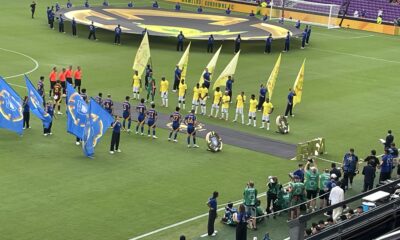
 Local Soccer Events1 week ago
Local Soccer Events1 week agoUlsan HD FC vs. Mamelodi Sundowns FC: Final Score 1-0 as South African Side Wins First FIFA Club World Cup Match in Orlando
-
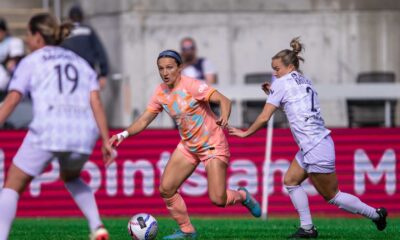
 Orlando Pride6 days ago
Orlando Pride6 days agoOrlando Pride vs. Racing Louisville FC: Preview, How to Watch, TV Info, Live Stream, Lineups, Match Thread, and More
-
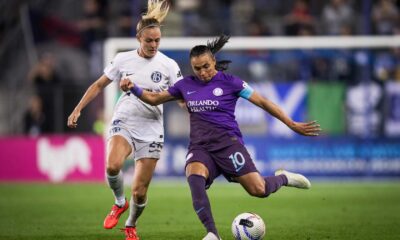
 Orlando Pride2 weeks ago
Orlando Pride2 weeks agoOrlando Pride vs. Bay FC: Preview, How to Watch, TV Info, Live Stream, Lineups, Match Thread, and More
-
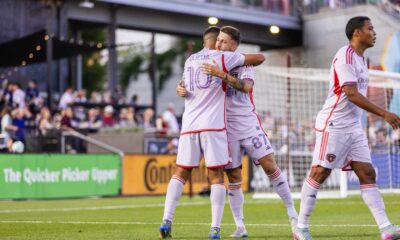
 Orlando City2 weeks ago
Orlando City2 weeks agoOrlando City vs. Colorado Rapids: Final Score 1-0 as Ojeda’s Goal Snatches Road Win for Lions
-
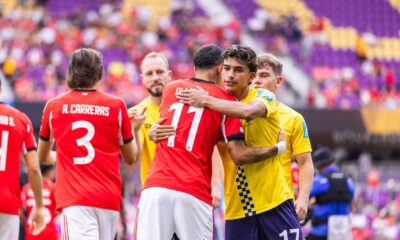
 Local Soccer Events5 days ago
Local Soccer Events5 days agoSL Benfica vs. Auckland City FC: Final Score 6-0 as Benfica Wears Down New Zealanders
-
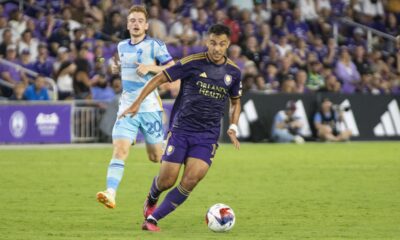
 Orlando City2 weeks ago
Orlando City2 weeks agoOrlando City vs. Colorado Rapids: Preview, How to Watch, TV Info, Live Stream, Lineups, Match Thread, and More
-
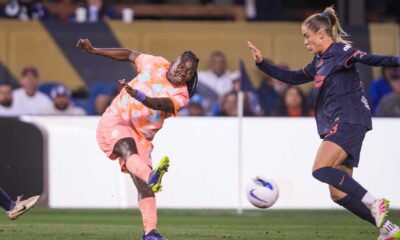
 Orlando Pride2 weeks ago
Orlando Pride2 weeks agoOrlando Pride vs. Bay FC: Final Score 1-0 as the Pride Hold On After Banda’s Goal
-
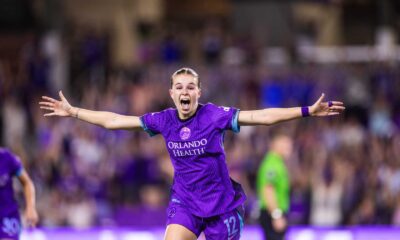
 Podcasts2 weeks ago
Podcasts2 weeks agoSkoPurp Soccer Episode 90: Houston Rewind, Pride Call-Ups, Bay FC Preview, and More


